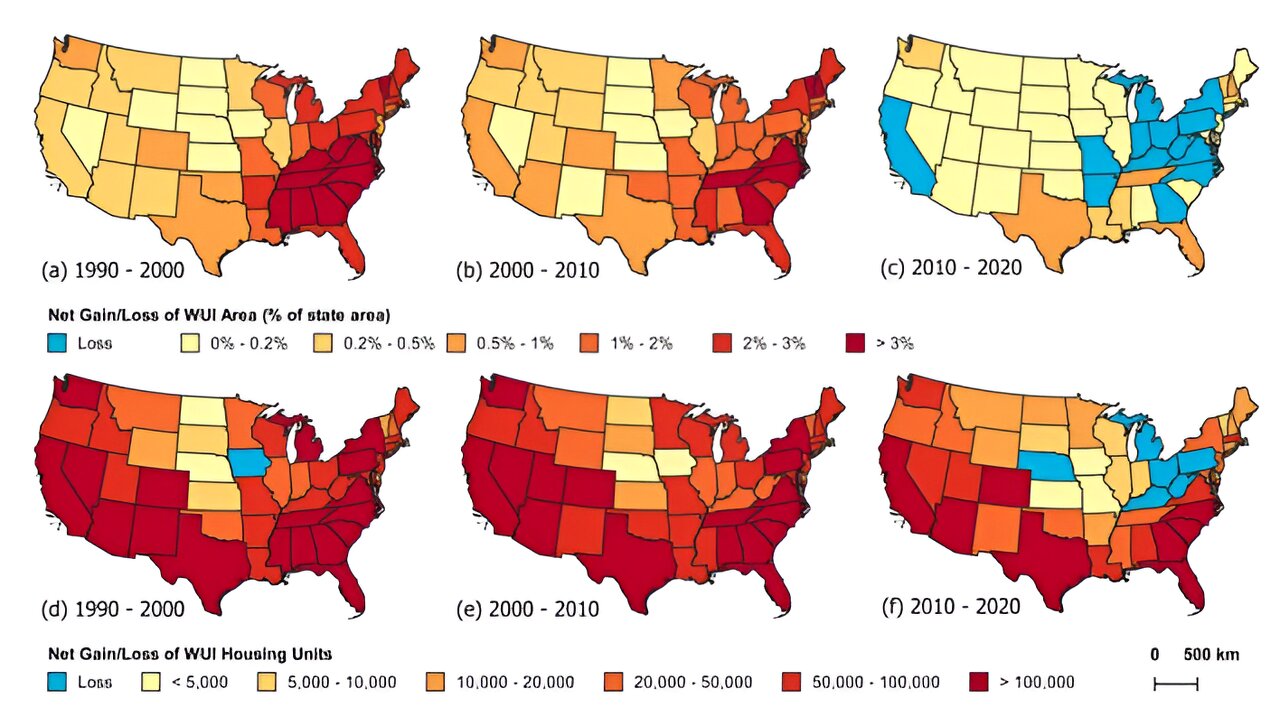A team of forestry management researchers at the University of Wisconsin, working with a colleague from the U.S. Department of Agriculture Forest Service, and another from the U.S. Geological Survey, Geosciences and Environmental Change Science Center, has found that the number of houses burned by wildfires in the U.S. over the past 30 years has grown substantially.
In their project, published in the journal Science, the group studied records showing the degree of expansion of houses into wildland urban interface areas compared with wildfires in the U.S. Judson Boomhower with the University of California, San Diego, has published a Policy Forum piece in the same journal issue outlining the work and the results.
Wildfires in the U.S. have become a staple of the news cycle as ever-larger fires burn huge swaths of grasslands and forests in many parts of the U.S. Prior research has suggested fires are becoming more intense due to drier conditions related to climate change and, in some cases, poor forestry management. For this new study, the researchers looked at associations between the number of houses burned by wildfires and the reasons for it.
The researchers looked at statistics for all the known wildfires in the U.S. over the years 1990 to 2020. They also looked at statistics for homes that exist or were built in wildland urban interface (WUI) areas—where homes are built next to natural areas—over the same time period.
The team found that the amount of land characterized as WUI grew by approximately 31% over the study period. They also found that the number of houses in WUI areas grew by 46%, which today numbers approximately 44 million. And they found that the number of houses burned in wildfires has doubled over the past 30 years—55,000 houses have burned in just the past 12 years.
2023-11-11 03:41:02
Post from phys.org
